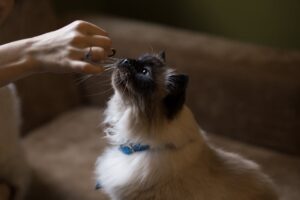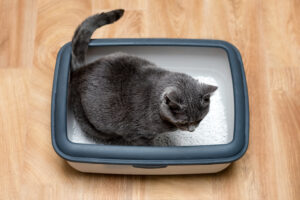Cats are natural-born hunters and explorers. Even though indoor cats live a life of comfort and safety, they can easily become bored or stressed without adequate mental and physical stimulation. This is where indoor cat enrichment comes in. By providing engaging activities and a stimulating environment, you can ensure your indoor cat thrives.
Why Indoor Cat Enrichment Matters
Enrichment is essential for a cat’s overall well-being. It helps:
- Prevent Boredom: Bored cats can develop destructive behaviors like scratching furniture or excessive vocalization.
- Reduce Stress: Enrichment activities provide outlets for natural instincts and reduce anxiety.
- Maintain Physical Health: Playing and exercise help cats stay at a healthy weight and avoid obesity-related issues.
- Mental Stimulation: Challenges and puzzles keep cats mentally sharp and engaged.
Types of Enrichment
- Environmental Enrichment
- Vertical Space: Cats love to climb. Provide cat trees, shelves, or window perches for them to explore different heights.
- Hiding Spots: Cardboard boxes, tunnels, and covered beds offer safe spaces for cats to retreat and relax.
- Scratching Posts: Give your cat a variety of textures to scratch, such as sisal, cardboard, or carpet.
- Window Views: Place a comfortable bed or perch near a window so your cat can watch birds, squirrels, or other outdoor activity.
- Sensory Enrichment
- Catnip and Silvervine: These plants provide a burst of energy and euphoria for many cats.
- Interactive Toys: Treat puzzles, battery-operated toys, or wand toys encourage play and exercise.
- Food Puzzles: Make mealtime more interesting with puzzle feeders that require cats to work for their food.
- Varying Textures: Place different textures like blankets, rugs, or even bubble wrap on the floor for your cat to explore.
- Social Enrichment
- Playtime: Dedicate regular time each day for interactive play sessions with your cat using toys like feathers, laser pointers, or fishing rod toys.
- Companionship: If your cat is social, consider adopting a second cat as a playmate (after careful introductions).
- Puzzle and Training
- Clicker Training: Teach your cat tricks and commands for mental stimulation and bonding.
- Puzzle Toys: Choose toys that challenge your cat to figure out how to get treats or food out of them.
DIY Enrichment Ideas
- Cardboard Box Creations: Turn boxes into forts, tunnels, or scratching posts.
- Paper Bag Fun: Always remove handles, but cats often enjoy batting around paper bags.
- Homemade Toys: Craft toys from feathers, fabric scraps, or even empty toilet paper rolls.
Tips for Successful Enrichment
- Rotate Toys: Prevent boredom by introducing new toys regularly and putting away others.
- Supervise Play: Make sure toys are safe and appropriate for your cat’s age and size.
- Tailor to Your Cat: Each cat has unique preferences, so experiment to find out what your cat enjoys most.
Conclusion
Indoor cat enrichment is more than just providing toys and entertainment. It’s about fostering a happy, healthy, and fulfilling life for your feline companion. By incorporating various forms of enrichment into your cat’s daily routine, you’ll be rewarded with a playful, curious, and contented cat.






